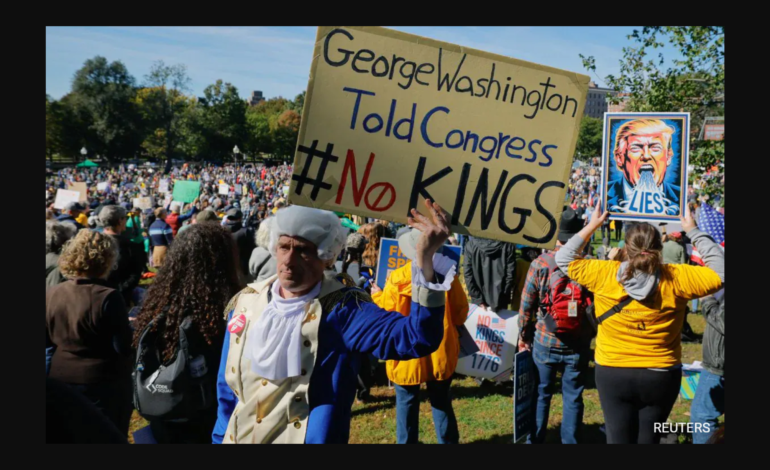
Millions turn out for ‘No Kings’ protests against Trump — activists vow to sustain momentum
Millions of Americans took to the streets on October 18 in one of the largest protest movements in recent U.S. history, rallying under the banner “No Kings” to oppose President Donald Trump’s policies. While the rallies captured headlines, organizers say the real challenge begins now — maintaining momentum and transforming mass demonstrations into long-term civic engagement.
More than 7 million people participated in over 2,700 protests nationwide, from large metropolitan centers to small towns. Despite critics calling the rallies performative, progressive organizers insist they represent the beginning of sustained political resistance.
Lisa Gilbert, co-president of Public Citizen, called the movement a defining civic moment. “To save democracy, we need a level of participation and understanding far beyond anything we’ve seen before,” she said.
Local actions followed swiftly. In Cave Creek, Arizona, activists organized food drives; in Chattanooga, Tennessee, they staged Halloween-themed protests; and in Lexington, Kentucky, residents hosted grassroots organizing workshops. The message: activism doesn’t end when the crowds disperse.
Ezra Levin, co-founder of Indivisible, said a third round of protests is already being planned. “If people remain isolated, we lose,” he said. “The only hope is if folks find community and start organizing together.”
Political scientists say the scale of the protests underscores a rising trend of civic activism. Professor Jeremy Pressman of the University of Connecticut noted that the anti-Trump movement’s foundation is stronger than in 2017. “There’s more momentum and a higher baseline of engagement,” he said.
The “No Kings” organizers have rebranded as the No Kings Alliance, focusing on coordinated actions like urging citizens to call senators and demand restoration of health care cuts from Trump’s summer budget bill. Nearly 40,000 people joined a virtual follow-up meeting to strategize next steps.
Political consultant Jiggy Geronimo emphasized that visibility is key. “People join movements when they see others taking action,” she said. “Social feeds should be filled with stories of resistance and hope.”
Criticism from Trump allies was swift. The former president dismissed the rallies, while Steve Bannon mocked the age of participants. However, Sen. Ted Cruz urged Republicans to take the movement seriously, warning that “energized voters show up to vote.”
Organizers point to the 3.5% theory of civil resistance, which suggests that when 3.5% of a population actively engages in peaceful protest, governments tend to fall or shift course. While not a “magic number,” activists say it symbolizes the long-term goal of sustained civic involvement.
As Levin put it, “The ‘No Kings’ era is defined by mass defiance and deep organizing. The goal isn’t one big protest — it’s a movement that endures.”